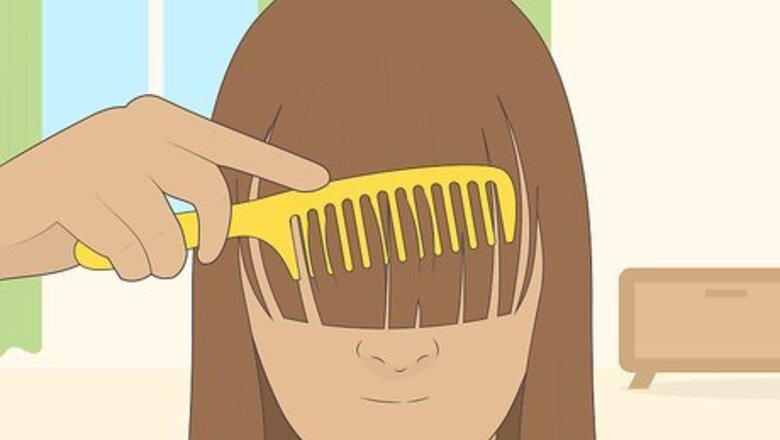
views
Hair Prep
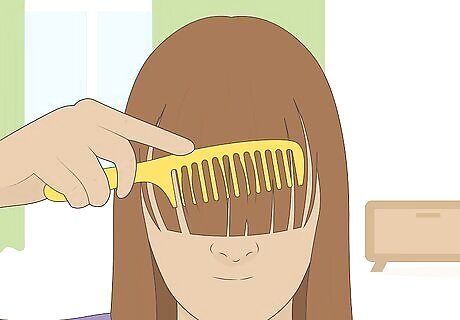
Brush your dry hair forward from your crown toward your forehead. The crown is the topmost part of your head. Place a brush or comb at your crown and drag it forward to section off the hair for your bangs. Only brush the hair on top of your head for this! The sides should hang down like they normally do. Hair looks longer when it’s wet and shrinks up when it dries. To avoid accidentally going to short, cut your bangs dry.

Section off the hair in between your eyebrow arches. To avoid cutting your bangs too wide, use your eyebrow arches as guides. Trace invisible lines from your eyebrow arches up to your hairline. Then, section off the hair that falls in between the arches.
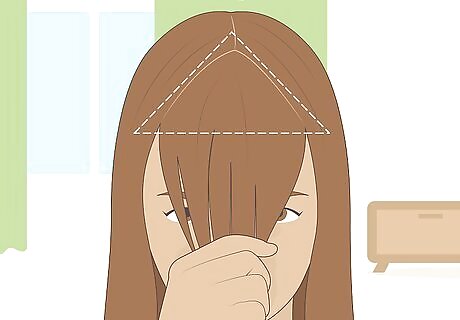
Bring the arch lines together at your crown to create a triangle. Bangs start at a single point at the crown of your head. You've already marked off the width between your eyebrow arches, so bring the 2 arch lines together until they meet at the crown. This creates a section of hair shaped like a triangle.
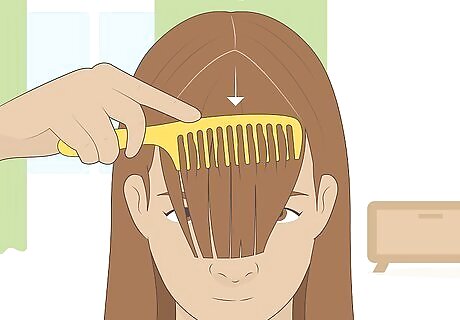
Run a comb through the sectioned hair from crown to tip to smooth it. Take a moment to tuck the lengths of your hair on each side behind your ears to get them out of the way. Then, comb the sectioned hair forward to smooth it out and get rid of any knots. If you have any hair clips within reach, clip the lengths of your hair back instead of tucking them behind your ear.
Twist Technique
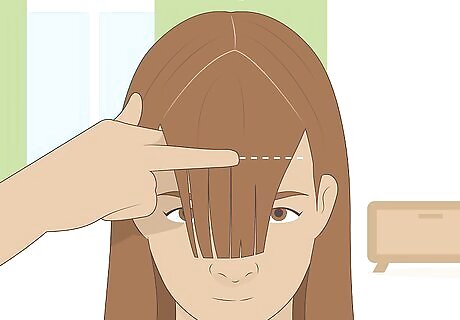
Put the sectioned hair between your fingers at the hairline. Use your dominant hand for this. Sandwich the hair between your index and pointer fingers at your front hairline, taking care to keep your fingers horizontal.
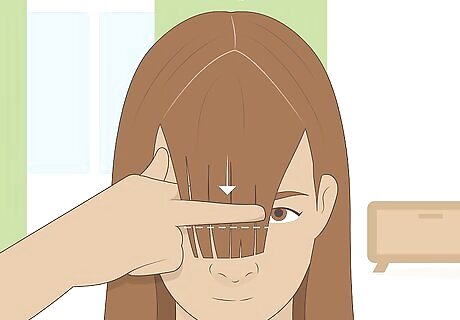
Slide your fingers down and stop where you want your bangs to end. The length is up to you, but if you have a long face or big forehead, go with longer bangs. The shorter your bangs are, the more length you add to your face. Once you reach your desired length, gather all of the hair in the center of your face. Don’t forget to keep your length marked and your fingers horizontal! This is the length at the center of your bangs. The sides will be about ⁄2 inch (1.3 cm) longer. For example, if you want bangs that graze the top of your eyebrows, stop there. Your bangs will gently round out to about temple length on each side, creating a soft, inverted U. This is a pretty standard length and tends to flatter most faces. If you want face-framing curtain bangs, stop at the bridge of your nose. If you want long bangs that blend in with your first layer, stop at cheekbone-level.
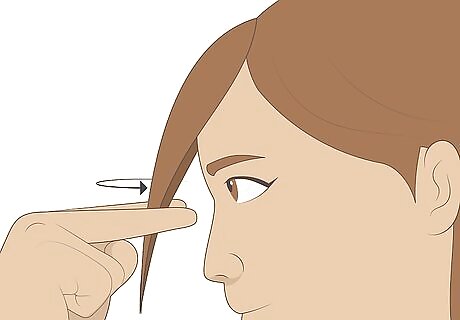
Rotate your fingers a half-turn so they’re pointing straight at your nose. If you’re right-handed, rotate your hand a half-turn to the left. If you’re left-handed, rotate your hand a half-turn to the right. Stop once your fingers are pointing straight at your nose. Continue keeping your fingers perfectly horizontal.
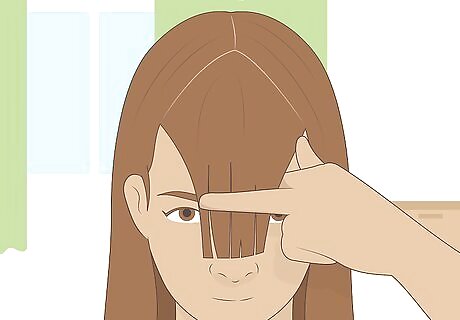
Slide the 2 fingers of your free hand in to replace the dominant hand. Use your index and middle finger of your other hand to replace your dominant hand in the exact same place and at the exact same angle as before. Rotate your fingers another half-turn in the same direction as before so they're horizontal again. Now your dominant hand is free to cut your bangs!
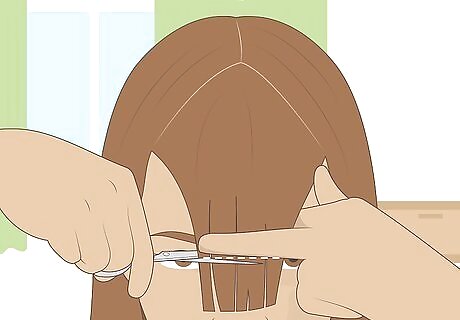
Make a clean, horizontal cut under your fingers to create your bangs. Keep your fingers perfectly horizontal. Then, make a clean, straight cut through your hair right below your index and middle fingers. Be sure to use sharp hair-cutting shears for the best results. Use the bottom of your fingers as a guide so that your cut is perfectly horizontal.
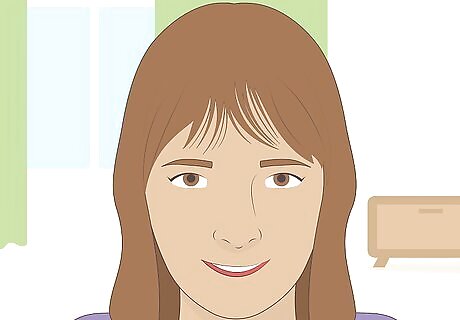
Release the hair and comb it straight down to check out your bangs. Let go of the hair with your fingers. Grab a comb and drag it through your hair from the front hairline down through the lengths of your bangs. Keep combing your bangs until they settle into the right place. Your round bangs are all set! This technique creates bangs with a gentle, inverted U-shape. If the length looks slightly off at any point along the U, hold the scissors horizontally and make tiny snips to take off the extra length.


















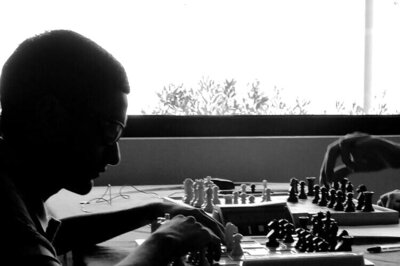
Comments
0 comment